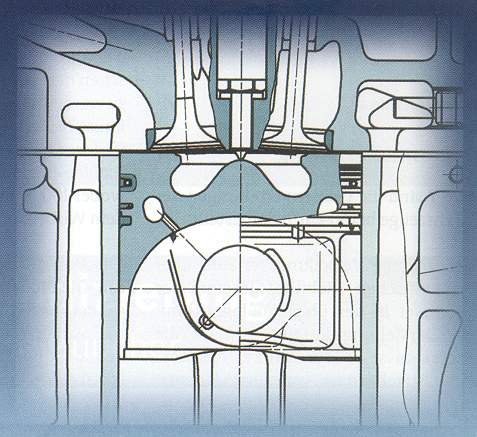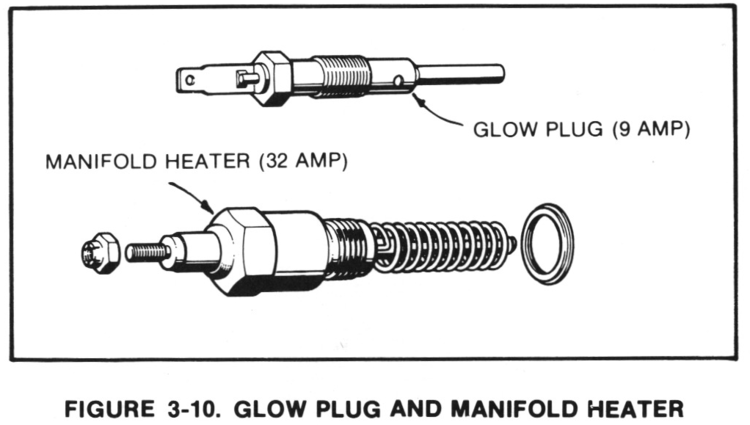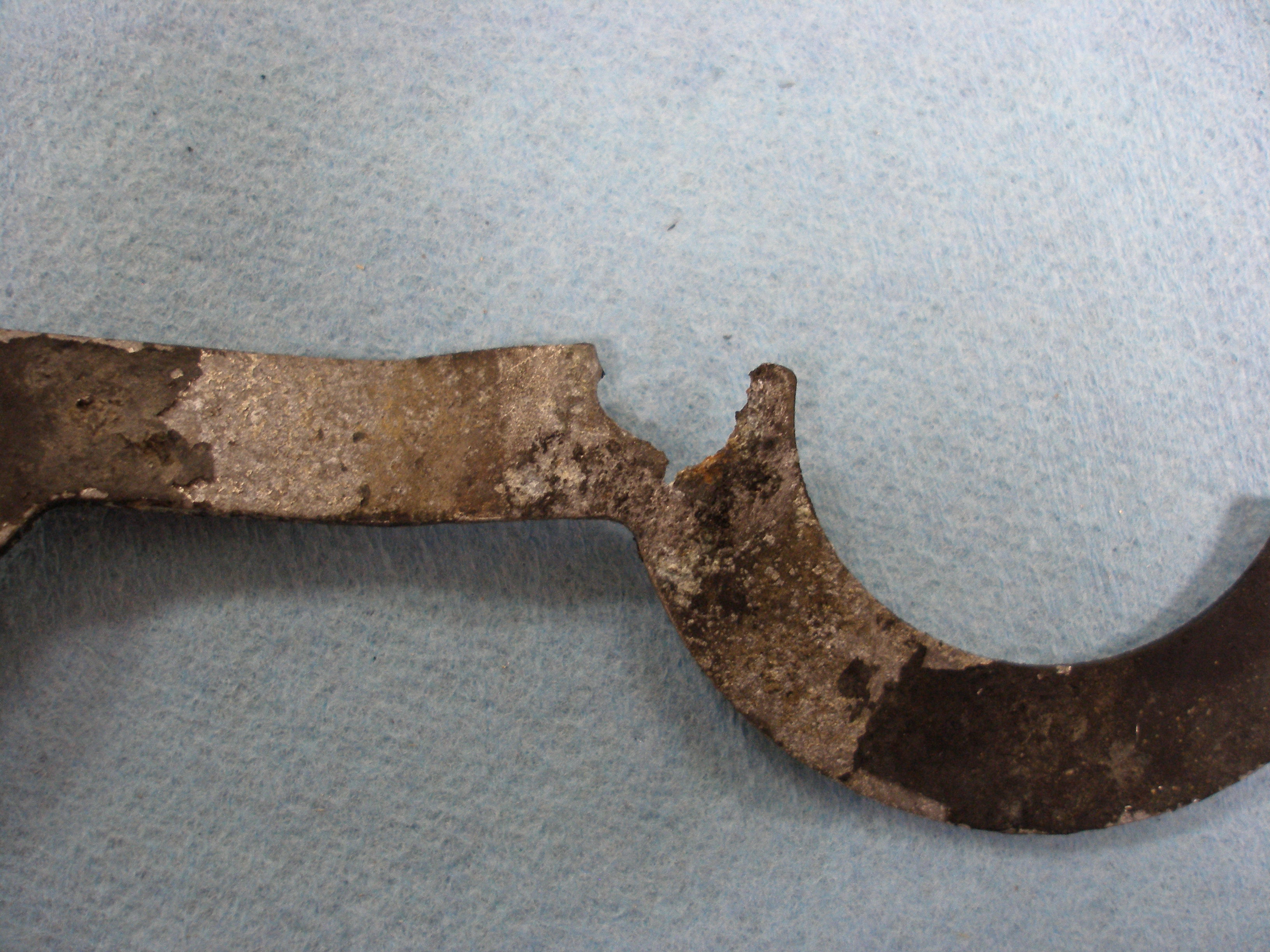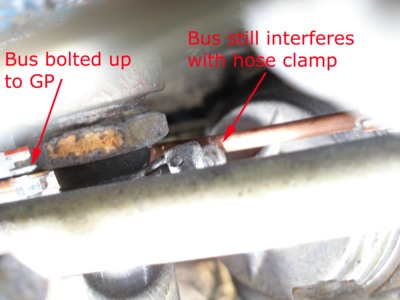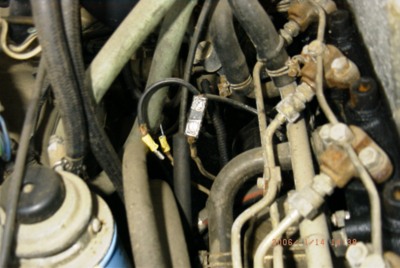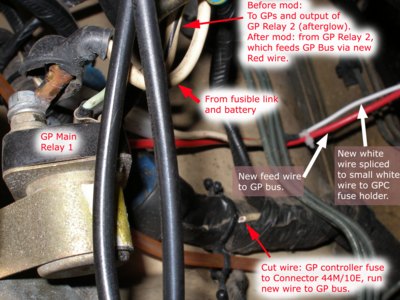davehoos wrote:early diesel engines started on gasolene,warmed up using vapourised oil /kerosene then turned over to diesel.
A large international bulldozer 1940's i looked at used a second petol motor the turnover the diesel engine with its exhaust heating an updraft vapourised oil tray.it had a downdraft petrol carby,and a heated intake manifold and fuel tank for running on kerosene.on the other side of the engine was full diesel set up the engine was side valve style,these are very low compression.
An example, from an old post of mine over at the
biodieselnow.com forum.
=====================================================
willc733 wrote:
an ordinary gas engine will never fire on diesel? will it?
As an example: how easy is it to ignite BD if you splashed a puddle on the ground and threw a lit match on it?
This experiment illustrates that the volatility of BD is very low: it is hard to ignite at room temperature. Now imagine trying to vapourize BD in a cold engine, enough to ignite it with a spark. See the problem?
Many years ago -- WWII era and for a couple of decades afterward -- kerosene (similar to No. 1 diesel) was used to run various gasoline engines. For a number of years in the 60's, there were even kits to convert your Briggs & Stratton engine to kerosene operation. Kerosene (and diesel) are much cheaper to make, and therefore cheaper to sell than gasoline. Or, at least, they were back then. Refinery operations are now optimized for the proportion of output for each that are needed.
All the conversion kits I've seen did it the same way: start the engine on gasoline, and when it got good and warmed up, switch to the harder-to-ignite kerosene.
Kerosene has a lower octane rating than any gasoline, so the "kits" included either a shim or thick head gasket to lower the compression ratio, to avoid destroying the piston from preignition.
I suppose that it's possible to incorporate some kind of preheater to get the BD to vapourise and get it up closer to its flash point temperature, prior to admitting it to the combustion chamber, and you might be able to run a spark ignition engine with it. But SI engines require intake air throttling, which is a big efficiency killer ("pumping losses") -- and is one reason why modern-era diesels get better fuel mileage than a gasoline counterpart.
Offhand, I can't think of a good reason to want to do this.
PS No. 1: Incidentally, the MB 200D (and older -- possibly even the 220D) utilize an intake throttle for normal operation. It's the only diesel I know of that does this. The Nissan LD28 also uses an intake throttle, but it's under computer control to regulate EGR operation, not for normal user-controlled operation.]
PS No. 2: I once had a "diesel Toro lawnmower". Well, sorta.
I was renting a cheap storage barn-like structure in the '70s, and there was a beat-up '60s-era Toro walk-behind mower behind the barn. One summer day I decided that the area needed a good mowing/clearing, and the Toro was elected to Give Its All for the cause. I was able to persuade it to start and run one more time, though much aerosol light volatiles and select vulgar language was required. Removing the antique spark plug and heating its ground electrode cherry red didn't hurt, either.
Finally got it running (on gasoline) pretty good. It was a hot day. We dragged it about the building and surrounding overgrown garden for about an hour, and eventually got good and hot and sweaty, taking turns. After a bit, we ran out of gasoline, so we started pouring whatever smelled bad into the mower's tank. We went through paint thinner, some very old gasoline that smelled like an antique furniture restorer's back room, then some kerosene we found, and finally some diesel. The Toro really didn't cotton to this rough treatment, and protested with much clacking and rattling, but kept spinning 'round the by-now dull-as-a-two-by-four "blade". We kept knocking waist-high thistles down and mulching them, and in the normal course of events, the spark plug's wire got knocked off, was flying around the back of the deck. Didn't slow the engine down a whit.
I ran it about fifteen minutes in that mode, and finally nobody wanted to pull the Toro around anymore, so I killed the engine on a hillock to stop it. It never ran again, of course, but I can only assume that some glowing carbon or whatever in the combustion chamber was actually lighting off the somewhat volatile mess we were putting in its tank. I suppose that this was more of a "glow plug ignition" engine.
For most people, this sort of thing is a one-time-only experiment. It's certainly hard on lawnmowers

[later post]
Dad:2-7-2000 wrote:
Re: Bucyrus Erie
> > era 1945
> >
> > Gasoline or Diesel ?
>
> This is _really_ weird! It sure looks like a diesel on
> one side, and it has a distributor on the other. Weird.
Well, ----- it was a loaded question.
It actually is ---> BOTH
The gas tank looks like it could hold about 1/2 gallon
The diesel tank looks like 15 / 20 gallons possibly
The idea is that you start it on gasoline and warm it up
and then switch over to diesel to use for loads.
While the injection pump has failed, it does start and will
move around ( I am told ) on gasoline, but does not have
enough power to do any work. It was driven to the
site you see in the three pictures -- in Alamo, NV
I thought you would appreciate this bit of trivia
part of the floral and fauna of Alamo
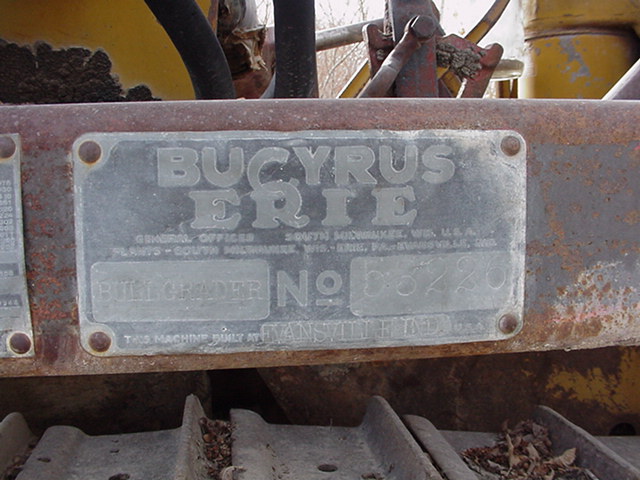
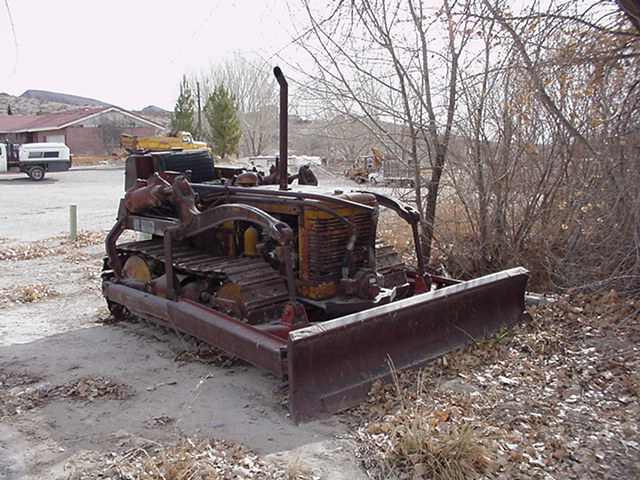
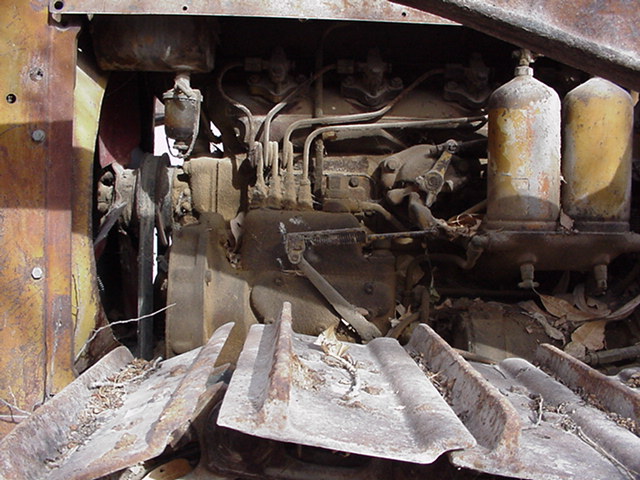
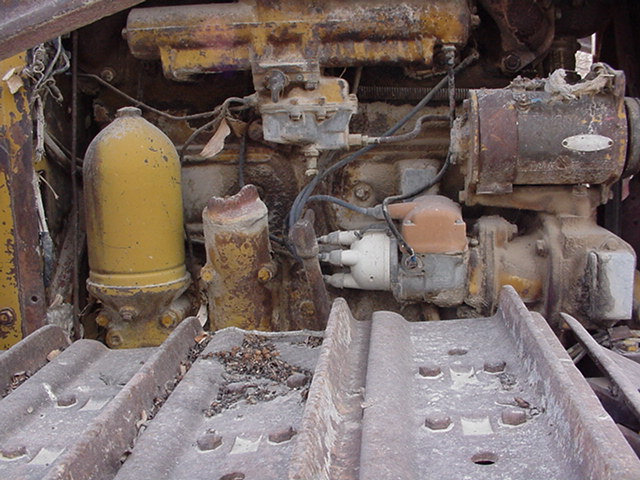
[later]
It was a possibility that I'd considered, but I was having trouble figuring out a compression ratio that would allow a diesel (min. 18:1, as far as I know) and a gas engine (max about 14:1) run with the same mechanicals. This sort of arrangement used to be fairly common for dual-fuel small engines in the east: start up on gasoline, switch over to kerosene, but in that case the compression has to be _lowered_ to work. B&S had a service bulletin about it, to install TWO head gaskets for proper operation.
> I thought you would appreciate this bit of trivia
> part of the floral and fauna of Alamo
I do! I like the hydraulic pump hanging off the front of the grillwork
<G>.
=====================================================
davehoos wrote:it is possible to change compression ratio with the engine running,in modern times a turbo/super charger is used.
Well . . . technically, changing the intake pressure isn't changing the compression
ratio but the peak combustion pressure, but I know what you mean.
The
early Lister diesel used a variable compression ratio system that involved a dual-seat valve, so that you could start it in high compression and lower it for normal running, just the opposite of what you do with a modern lawnmower or vintage BSA Victor 441 (etc.)! I've read that you could run in "high compression" mode for up to 1/3 load safely on that engine.
davehoos wrote:hicompression is about fuel use eficency but oxides on nitrogen form in hot combustion,this is most toxic to humans.
NOx isn't toxic at all, but it's a precursor to ground level ozone (O3, which isn't terribly good for you, despite many touted health benefits by some folks) and O3's a respiratory irritant IIRC. NOx also contributes to photochemical smog, which looks bad but isn't particulary dangerous in and of itself.
NOx without HC has no serious issues. The problem is that there's a lot of free HC around, and combine HC, NOx and sunlight and that's when you get O3. To my thinking, NOx control isn't as important as HC control. Diesels have very low HC emissions, which is why there were no HC & CO emissions tests for diesels for many years.




